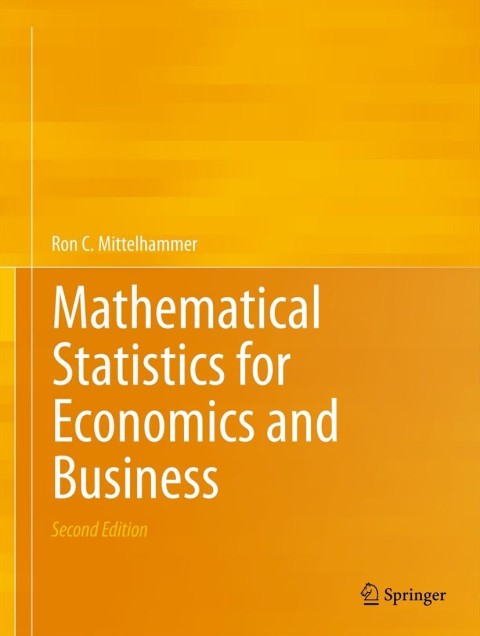The daily quantity of a commodity that can be produced using a certain type of production technology
Question:
The daily quantity of a commodity that can be produced using a certain type of production technology is given by the outcome of the random variable \(Q\), defined as \(Q=10 x_{1}^{35} x_{2}^{5} V\), where \(Q\) is measured in tons/day, \(x_{1}\) represents units of labor per day, \(x_{2}\) represents units of capital per day, and \(\mathrm{v}=e^{\varepsilon}\), with \(\varepsilon \sim N\left(0, \sigma^{2}ight)\).
(a) Derive the probability density function of the random variable \(V\). (What you will have derived is a PDF that is a member of the "lognormal" family of densities. In general, if \(X \sim N\left(\mu, \sigma^{2}ight), Y=e^{X} \sim\) lognormal with mean \(=\exp \left(\mu+\sigma^{2} / 2ight), \quad\) variance \(=\exp \left(2 \mu+2 \sigma^{2}ight)-\) \(\exp \left(2 \mu+\sigma^{2}ight)\), and \(\mu^{\prime}{ }_{r}=\exp \left[r \mu+1 / 2 r^{2} \sigma^{2}ight]\).
(b) Derive the density of \(Q\) if \(x_{1}=x_{2}=2\).
(c) Define the expected value of \(Q\) in terms of the levels of \(x_{1}, x_{2}\) and \(\sigma^{2}\). What is the expected value of \(Q\) if \(x_{1}=x_{2}=2\) and \(\sigma^{2}=1\) ?
(d) The above production technology is used in 1,600 plants in a country in Eastern Europe. The economy is centrally planned in that country, and all of the plants are required to use labor and capital at the levels \(x_{1}=7.24579\) and \(x_{2}=4\). Assume that \(\operatorname{var}(\varepsilon)\) \(=.25\). An economist says that the aggregate daily production function \(Q^{*}=\sum_{i=1}^{1600} Q_{i}=10 x_{1}^{35} x_{2}^{.5} \sum_{i=1}^{1600} V_{i}\)
is such that aggregate daily production, \(Q^{*}\), can be considered to be approximately normally distributed. Do you agree? Justify or refute the economist's proposition. You may assume that \(V_{i}{ }^{\prime} \mathrm{s}\), and hence the \(Q_{i}{ }^{\prime} \mathrm{s}\), are jointly independent r.v.s.
(e) Define the appropriate Berry-Esseen inequality bound on the approximation error corresponding to a CLT applicable to part (d).
Step by Step Answer:

Mathematical Statistics For Economics And Business
ISBN: 9781461450221
2nd Edition
Authors: Ron C.Mittelhammer





